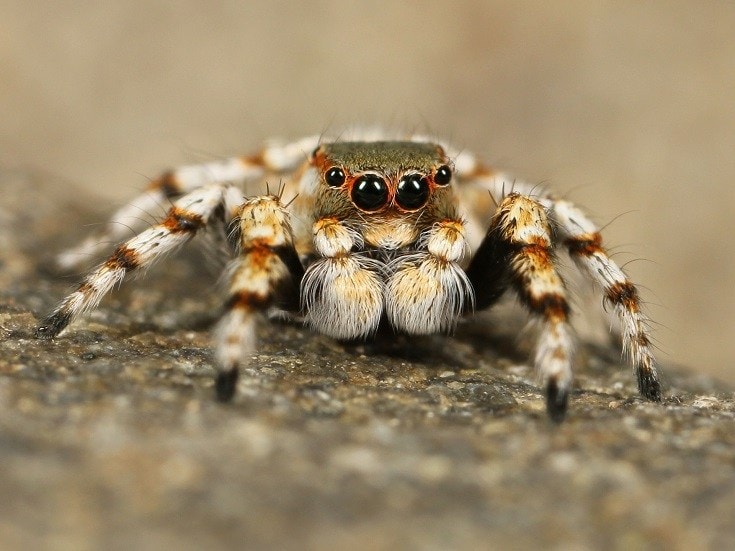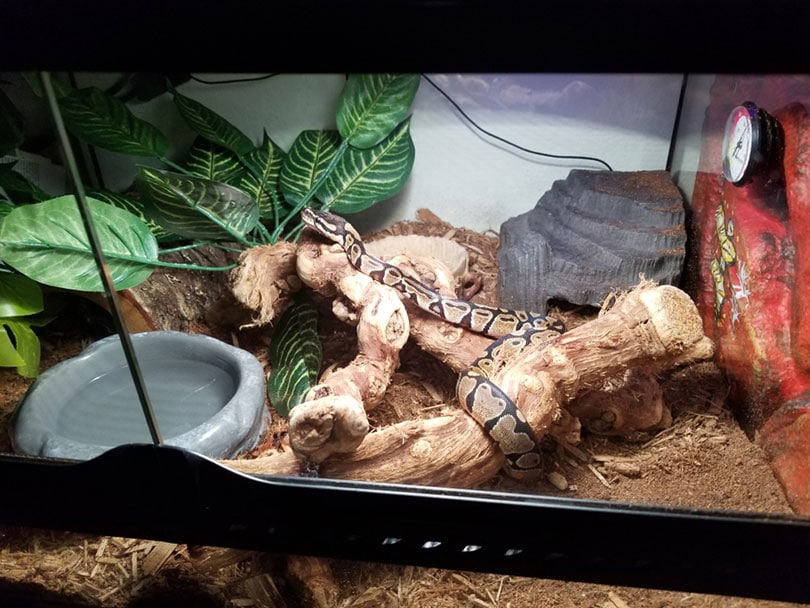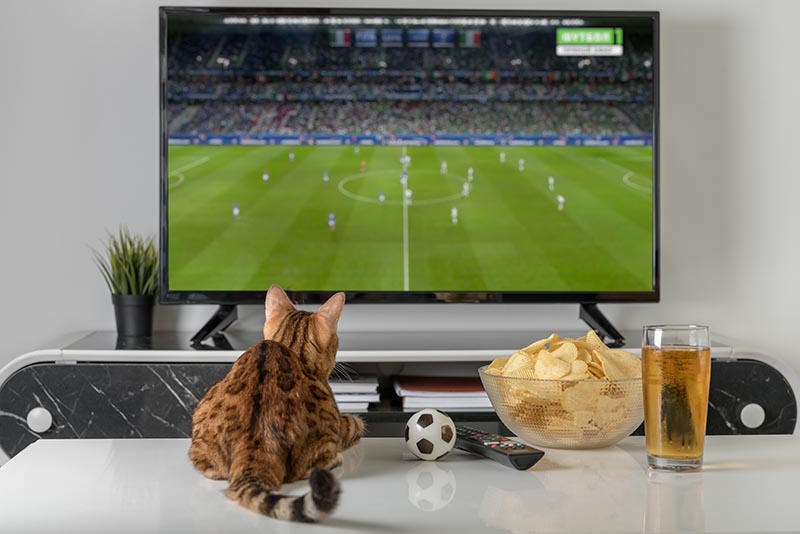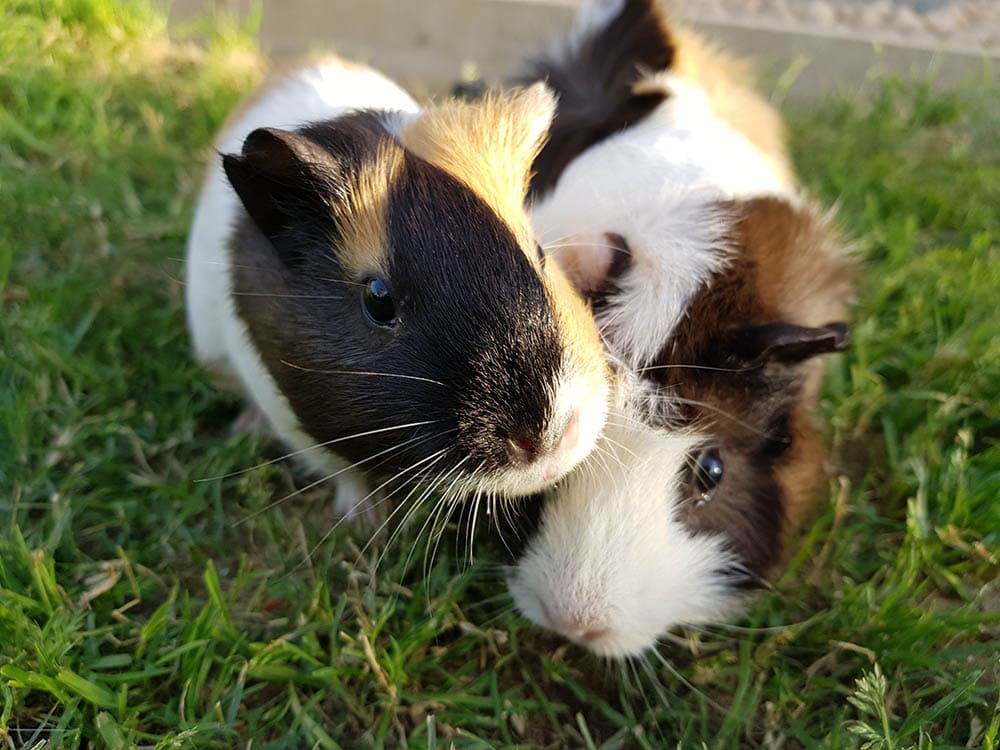Click to Skip Ahead
Tarantulas are invertebrate spiders belonging to the Theraphosidae family. Over 1,200 species live across the globe, and they’ve become popular exotic pets for adventurous animal lovers. But in times of crisis, how long can a tarantula go without food or water? Although the answer depends on the species and sex, tarantulas have been known to survive for up to 2 years without food. However, this spider will quickly dehydrate (within around a week) without any water or moisture in its environment.
A pet tarantula needs a drinkable source of water and humidity in its habitat. Most tarantulas will dehydrate and die within a week of not having water, but the average tarantula can go for a month or more without eating during its lifetime.1

How Do Tarantulas Eat and Drink?
Tarantulas are invertebrates, so they have different body systems from mammals. They need specific “prey” food items, such as other invertebrates or small reptiles, and many are picky about what they eat! Due to the unique way tarantulas drink and breathe, they also require a humidity-controlled environment alongside water sources. Knowing how this spider eats and drinks is key to narrowing down how long it can go without sustenance.
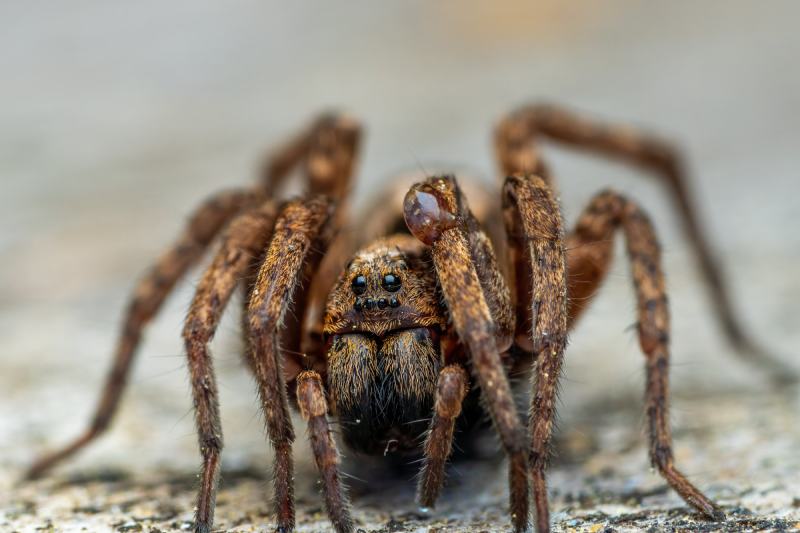
Eating
A tarantula’s mouth is essentially a long tube connected to wider chambers that act as the “stomach” and intestines. It does have fangs but has no true way of digesting larger pieces of food by mouth, and it doesn’t have the muscles needed to swallow. Instead, the tarantula uses a sucking motion to move liquid food through this tube from its mouthparts.
Any food it eats must be liquidized before eating. When prey is killed, the tarantula will excrete digestive juices that coat the prey and begin the digestion process. Large prey with many hard parts or bones (like mice) is crushed and pulverized before liquidation.
The liquified material is then sucked into the stomach and the intestine via the mouthparts. The intestines are permeable and can enable the broken-down molecules of the prey to travel through to the tarantula’s hemolymph (its “blood”) for use around the body.
Drinking
Tarantulas drink the same way that they eat—through their mouths! A tarantula will approach the water source and submerge itself into it, up to its chest. This enables them to dip their mouthparts (or chelicera) into the water and suck the water up. Tarantulas breathe through openings along their bodies and legs, so they won’t drown when submerged in this way. They also absorb water from their environment and their liquidated prey.
How Can Tarantulas Go So Long Without Eating?
These spiders can go for years without eating due to their incredibly low metabolic rate. A tarantula (and most other spiders) is an ambush predator that sometimes has to wait long periods for food.2 It hunts by constructing a web, though it doesn’t usually resemble the rounded webs that we normally think of for spiders. Some tarantulas will line their burrows with webbing and sit in wait to ambush their prey!
They will also endure periods without food when they’re preparing to molt. Tarantulas that shed their exoskeleton in favor of a bigger one to enable them to grow will commonly not eat for weeks or even months before and during the process. When molting, their metabolism slows down. Young tarantulas (spiderlings) will need to eat much more than adults do as they grow, and they reach sexual maturity at around 5 to 8 years old.
Tarantulas can sometimes live for 30 years! This spider’s metabolism will slow or speed up, depending on the food available in the area. However, without food, it will eventually starve and die.
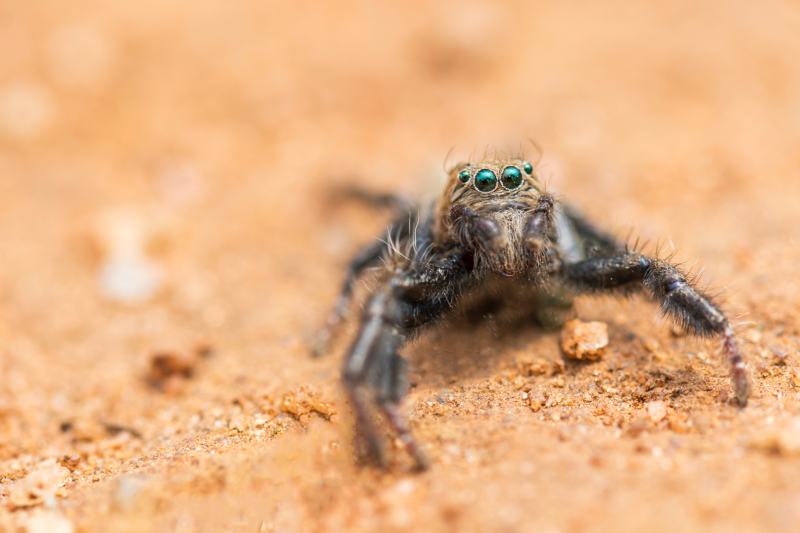
How Can You Tell If a Tarantula Is Hungry?
It can be tricky to determine when a tarantula is hungry, as to won’t bring its food bowl up to you as a dog would! Since tarantulas, by nature, have to conserve energy, they aren’t particularly active. However, it will display certain behaviors that point to hunger, which we can look out for when caring for them:
- Tarantulas may spin more webs when hungry to have a better chance of catching more prey.
- Tarantulas may pace or stalk the edges of their terrariums, searching for food.
- They may become noticeably more active as they prepare to hunt for food.
While these behaviors can sometimes be observed, there is often no discernable change in behavior when a tarantula is hungry in captivity. Most are shy, so feeding yours regularly is key to keeping it nourished.
Can Tarantulas Get Dehydrated?
Tarantulas can get dehydrated and need water to survive like all life. Humidity is important for this spider, as it can lose water in various ways. Drinking water and humidity in the environment are needed, with environmental humidity usually kept between 60% and 80%, depending on the species. Tarantulas can dehydrate in the following ways:3
- When molting (water acts as a lubricant when it sheds its skin)
- When defecating
- When egg-laying
- When spinning silk for their webs
- Through the inner surface of their lungs
- Through the joints in their legs
If a tarantula is dehydrated, it cannot shed its exoskeleton properly and can get stuck in its old skin. If the inner surfaces of its lungs aren’t moist enough, it can also have breathing problems!
What Do Tarantulas Eat?
Tarantulas are carnivorous and usually eat invertebrates, but they are also known to eat small vertebrates. The prey size depends on the tarantula; some bigger species (such as the Goliath Bird Eater) can catch lizards or birds as prey!
Captive tarantulas will commonly eat crickets or locusts as live food, though care must be taken when they’re molting. Crickets and locusts can hurt them when their freshly shed exoskeleton is exposed, as it’s soft. They can also eat mealworms and wax worms, and flies can sometimes be offered, depending on the tarantula’s size.
Tarantulas can be given cubes of low-fat raw beef to eat as treats, and some owners like to feed them “pinkies” (dead, hairless baby mice) if they are large enough.
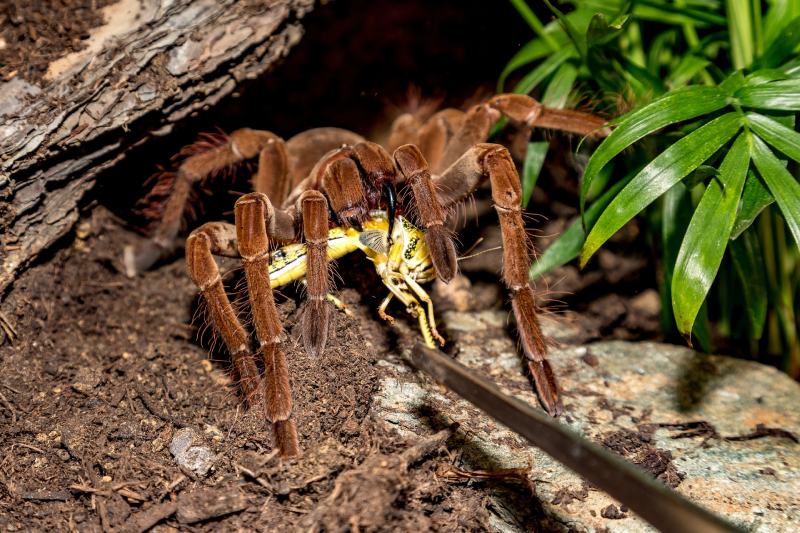
How Often Do Tarantulas Need Feeding?
If they’re not shedding or growing, tarantulas should be fed two to three crickets or locusts a week. This amount will vary from spider to spider, so selecting a healthy food and testing your pet’s intake will give you your baseline. Remove any food it doesn’t eat from its environment, since some prey (such as crickets) can hurt your tarantula and fight back!

Conclusion
Tarantulas need food and water to survive. However, they can go a long time without food. There’s evidence that a tarantula can go months or even years without food, but it will dehydrate quickly and die within a week or two without water. These spiders lose water in many ways, so they benefit from a humid environment to help them retain it. Tarantulas may go through periods of fasting during certain situations, such as when molting their exoskeleton. However, providing your Tarantula with species-appropriate food at all times and ensuring that they always have water is crucial for keeping them healthy and happy.
- https://www.latimes.com/archives/la-xpm-1985-02-03-ho-13565-story.html
- https://blogs.cornell.edu/spiders/tarantulas-terrible-or-terrific/
- https://www.giantspiders.com/captive-care/food-water/
- https://en.wikipedia.org/wiki/Tarantula
- https://commons.emich.edu/cgi/viewcontent.cgi?article=2487&context=theses
- https://everythingreptilion.com/how-long-can-a-pet-tarantula-go-without-eating/
- https://keepingbugs.com/do-tarantulas-drink-water-complete-guide-on-hydrating-tarantulas/
- https://www.avianexoticvetcare.com/handouts/other/tarantula-general-husbandry.pdf
- https://beyondthetreat.com/do-tarantulas-drink-water/
Featured Image Credit By: 12019, pixabay
